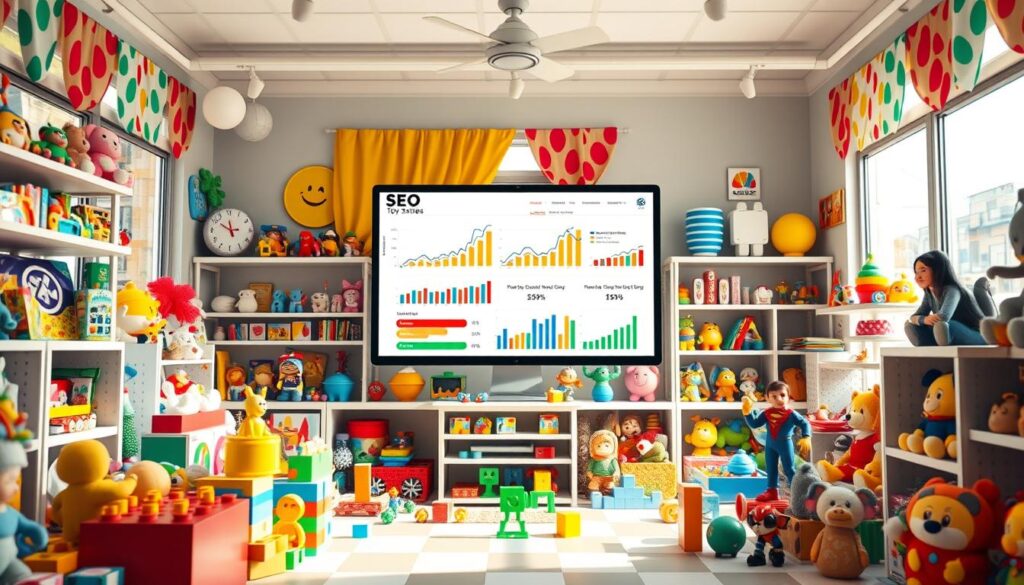SEO, or Search Engine Optimization, is like the secret sauce that can spice up your food court’s online presence. It’s all about making sure your spot gets noticed when folks are searching for a place to eat. When done right, SEO can help bring more foot traffic to your food court by making it pop up in search results. This article will walk you through the basics of SEO for food courts, from crafting engaging content to optimizing your website and using social media to boost visibility.
Key Takeaways
- SEO helps food courts stand out online and attract more visitors.
- Local SEO is crucial for targeting nearby customers looking for dining options.
- Creating engaging content, like blogs and user-generated posts, can boost online presence.
- Social media platforms are effective for promoting events and interacting with customers.
- Regularly analyzing performance with SEO tools helps in maintaining and improving search rankings.
Understanding SEO for Food Courts
Defining SEO in the Food Court Context
SEO, or Search Engine Optimization, is like the secret sauce that helps your food court show up in online searches. It’s about making sure when folks look for a place to eat, your food court pops up as a tasty option. This involves using the right keywords and organizing your website so search engines can easily find and rank it. Think of it as setting the table so diners can find what they want without any hassle.
Importance of Local SEO
For food courts, local SEO is a big deal. Most of your customers are likely nearby, so you want to make sure you’re showing up in local searches. This means having your location details correct on your website and online directories. Being on Google My Business is a must—it’s like putting a big sign on the internet that says, "We’re here, come eat!" Encourage happy customers to leave reviews online; it’s like word of mouth but digital.
Key Components of SEO Strategy
A solid SEO strategy for a food court includes a few key ingredients:
- Keyword Research: Find out what words people use when they’re hungry and looking for a place to eat.
- Content Creation: Make sure your website has tasty content that talks about your food options, special events, and more.
- Technical SEO: This is about making sure your site runs smoothly, loads fast, and is mobile-friendly.
"SEO for food courts isn’t just about being found; it’s about being the first choice when someone decides where to eat."
Creating Engaging Content for Food Courts

Types of Content to Consider
Creating content for food courts isn’t just about posting a few photos of dishes. It’s about crafting a narrative that pulls people in. Think about what stories your food court can tell. Video content is especially engaging—consider short clips that showcase the making of your signature dishes or a day in the life at your food court. Podcasts featuring chefs or food critics can also add a unique flavor to your content mix.
Utilizing Blogs and Articles
Blogs are a fantastic way to dive deeper into your food court’s story. Write about the origins of your dishes, the inspiration behind them, or share cooking tips. Regular updates keep your audience coming back for more. Use SEO-friendly keywords to boost your visibility. A well-written blog can position your food court as not just a place to eat, but a source of culinary knowledge.
Incorporating User-Generated Content
User-generated content is gold. Encourage your customers to share their dining experiences on social media. You could create a hashtag for your food court and feature the best posts on your official pages. This not only builds community but also provides fresh content without much effort on your part. It’s a great way to make your patrons feel valued and part of your food court’s journey.
In the bustling world of food courts, content is king. Whether it’s a behind-the-scenes video or a blog post about your latest dish, engaging content can transform casual visitors into loyal customers. By telling your story and inviting your audience to be part of it, you create a vibrant community around your food court. Remember, every piece of content is an opportunity to connect.
Leveraging Social Media for Visibility
Choosing the Right Platforms
Picking the right social media platforms is like choosing the best ingredients for a recipe. Not every platform will suit your food court’s needs, so it’s important to focus on where your audience hangs out. For visual content, Instagram and Pinterest are great for showcasing mouth-watering dishes and vibrant food court scenes. Facebook is useful for event promotions and community building, while Twitter can be handy for quick updates and engaging with customers in real-time.
Engaging with Your Audience
Social media isn’t just about posting pretty pictures—it’s about starting conversations. You want to engage with your audience by responding to comments, asking questions, and sharing user-generated content. Encourage customers to tag your food court in their posts and stories. This not only boosts your visibility but also builds a community around your brand. Remember, utilizing social media can significantly enhance restaurant marketing, yet personal interactions remain irreplaceable in building customer relationships.
Promoting Events and Specials
Got a new stall opening or a special event coming up? Social media is your megaphone. Share posts and stories about upcoming events, special offers, and new menu items. Use countdowns and teasers to create buzz and anticipation. Consider running contests or giveaways to further engage your followers. This not only draws attention to your events but also encourages more foot traffic to your food court.
Optimizing Your Website for Search Engines
Technical SEO Best Practices
Getting the technical side of SEO right is like setting the foundation for a house. Without it, everything else can crumble. First, make sure your website’s structure is easy for search engines to crawl. This means using a clean URL structure, creating a sitemap, and ensuring your site is free of broken links. It’s also crucial to use meta tags effectively. These little snippets of text describe your content to search engines, helping them understand what each page is about.
Mobile Optimization Strategies
Did you know that over 60% of online searches for restaurants come from mobile devices? That’s why having a mobile-friendly site isn’t just nice; it’s necessary. A responsive design ensures your site looks great on any device, whether it’s a smartphone, tablet, or desktop. Simplify navigation and make sure buttons and links are easy to tap on smaller screens. Also, consider mobile-specific features like click-to-call buttons for easy reservations.
Improving Page Load Speed
Nobody likes a slow website. If your pages take too long to load, visitors might leave before even seeing what you offer. Speeding up your site involves optimizing images, using browser caching, and minimizing code. Google considers page speed as a ranking factor, so it’s not just about user experience—it’s about getting seen. Regularly test your site’s speed and make adjustments as needed to keep it running smoothly.
Building a Strong Backlink Profile
Identifying Quality Backlink Opportunities
Building a strong backlink profile is like assembling a puzzle; you need the right pieces to see the full picture. Quality over quantity is key here. Start by looking for reputable sites in your niche. Think about local food blogs, community event pages, or even local news sites. These are places where your food court can shine. Also, consider using the "Site:" operator to discover .gov backlink opportunities by locating open .gov blogs and forums, and identifying potential guest posting avenues. This can be a goldmine for high-authority links.
Monitoring Your Backlinks
Once you’ve got some backlinks, don’t just sit back and relax. Keep tabs on them to ensure they’re still active and relevant. Use tools to alert you if any links go missing or become broken. This way, you can quickly address any issues, like replacing or repairing lost links. Regular monitoring helps maintain your site’s reputation and keeps your SEO efforts on track.
Strategies for Earning Backlinks
Getting backlinks isn’t just about luck; it’s about strategy. Here are some steps to consider:
- Create Engaging Content: Make sure your content is something people want to link to—think unique, informative, and engaging.
- Engage with the Community: Participate in local events or host your own. This can lead to mentions and links from community sites.
- Offer Guest Posts: Write articles for local blogs or industry websites. It’s a win-win—you get exposure, and they get fresh content.
Building a backlink profile is a continuous journey. It’s not just about getting links, but about cultivating relationships and ensuring your site remains a trusted resource in the community.
Utilizing Local Directories and Listings

Importance of Google My Business
Google My Business (GMB) is like your restaurant’s digital storefront. It’s essential to keep your GMB profile up-to-date with your current address, phone number, and business hours. Adding fresh photos and responding to customer reviews can help boost your visibility on search results. This is important because when folks are searching for a place to eat, they often check out the GMB profiles first. Make sure your restaurant stands out by providing all the necessary details and keeping everything accurate.
Encouraging Customer Reviews
Customer reviews are like gold in the digital world. They not only help build trust but also play a significant role in your local SEO rankings. Encourage your satisfied diners to leave positive feedback on platforms like Google, Yelp, and TripAdvisor. You might even consider offering a small discount or a freebie for those who take the time to review. Remember, both good and bad reviews are an opportunity for engagement. Responding to feedback shows that you care about your customers’ experiences and are willing to make improvements.
Maintaining Accurate Information
Keeping your restaurant’s information accurate across all online platforms is crucial. This includes your name, address, phone number, and even your menu. Inconsistent information can confuse potential customers and hurt your SEO efforts. Regularly check your listings on various directories to ensure everything is up-to-date. It’s a simple task but can make a big difference in how easily people can find and choose your restaurant.
Accurate listings are the backbone of effective local SEO. They ensure that when someone searches for a place to eat, your restaurant is easy to find and stands out from the competition.
By focusing on these aspects, your restaurant will have a stronger online presence, attracting more local diners and improving your search engine rankings.
For a deeper understanding of how business listings impact visibility in local intent search engine results pages, consider exploring the study on search engine results.
Analyzing Performance with SEO Tools
Using SERP Checkers Effectively
Knowing where your food court stands in search engine results is a game changer. Tools like SERP Checkers help you see how your website appears compared to competitors. They show the structure of search results, including snippets and local packs. This insight lets you tweak your content to match what search engines prioritize. Understanding your SERP position can boost your visibility and attract more customers.
Tracking Keyword Performance
Keywords are the backbone of SEO. Monitoring their performance helps you know which words bring in the traffic. Using AI-driven tools like Google Keyword Planner and SERanking can help Richmond businesses identify the most relevant keywords. These tools analyze data to show you which keywords are working and which aren’t. Adjust your strategy based on this info to keep your site relevant.
Conducting Regular Website Audits
Website audits are like health checks for your site. They help spot issues that might hurt your SEO, like broken links or slow page speeds. Running audits regularly ensures your website stays in top shape. Use tools that provide comprehensive reports so you can address problems quickly and keep your site optimized.
Regular audits and performance checks are essential to maintain a competitive edge in the crowded food court market. They ensure your SEO strategies are effective and your website is always ready to attract new visitors.
Conclusion
In the fast-paced world of food courts, standing out is more important than ever. SEO isn’t just a fancy term; it’s a necessity for getting noticed online. By using smart strategies like optimizing for local searches, engaging on social media, and keeping your website in top shape, food courts can draw in more hungry visitors. It’s about making sure that when someone searches for a place to eat, your food court is the first thing they see. So, dive into the world of SEO, and watch your food court become the go-to spot for diners looking for variety and flavor. It’s not just about being online; it’s about being found.
Frequently Asked Questions
What is SEO and why is it important for food courts?
SEO, or Search Engine Optimization, is a way to make your website show up higher in search results. For food courts, it’s important because it helps more people find you online, which can bring more visitors to your location.
How can food courts use local SEO?
Food courts can use local SEO by adding their city or area name to their website and making sure they’re listed on Google My Business. This helps local customers find them easily.
What types of content should food courts create?
Food courts should create content like blog posts, videos, and pictures that show off their food and events. This can help attract more visitors and keep them interested.
Why is social media important for food courts?
Social media helps food courts connect with people by sharing updates, photos, and special offers. This keeps customers engaged and encourages them to visit.
What are backlinks and why do they matter?
Backlinks are links from other websites to your own. They are important because they show search engines that your site is trustworthy, which can help improve your search rankings.
How can food courts track their SEO performance?
Food courts can use tools to check how well their keywords are doing and see how they rank in search results. This helps them know what’s working and what needs improvement.






